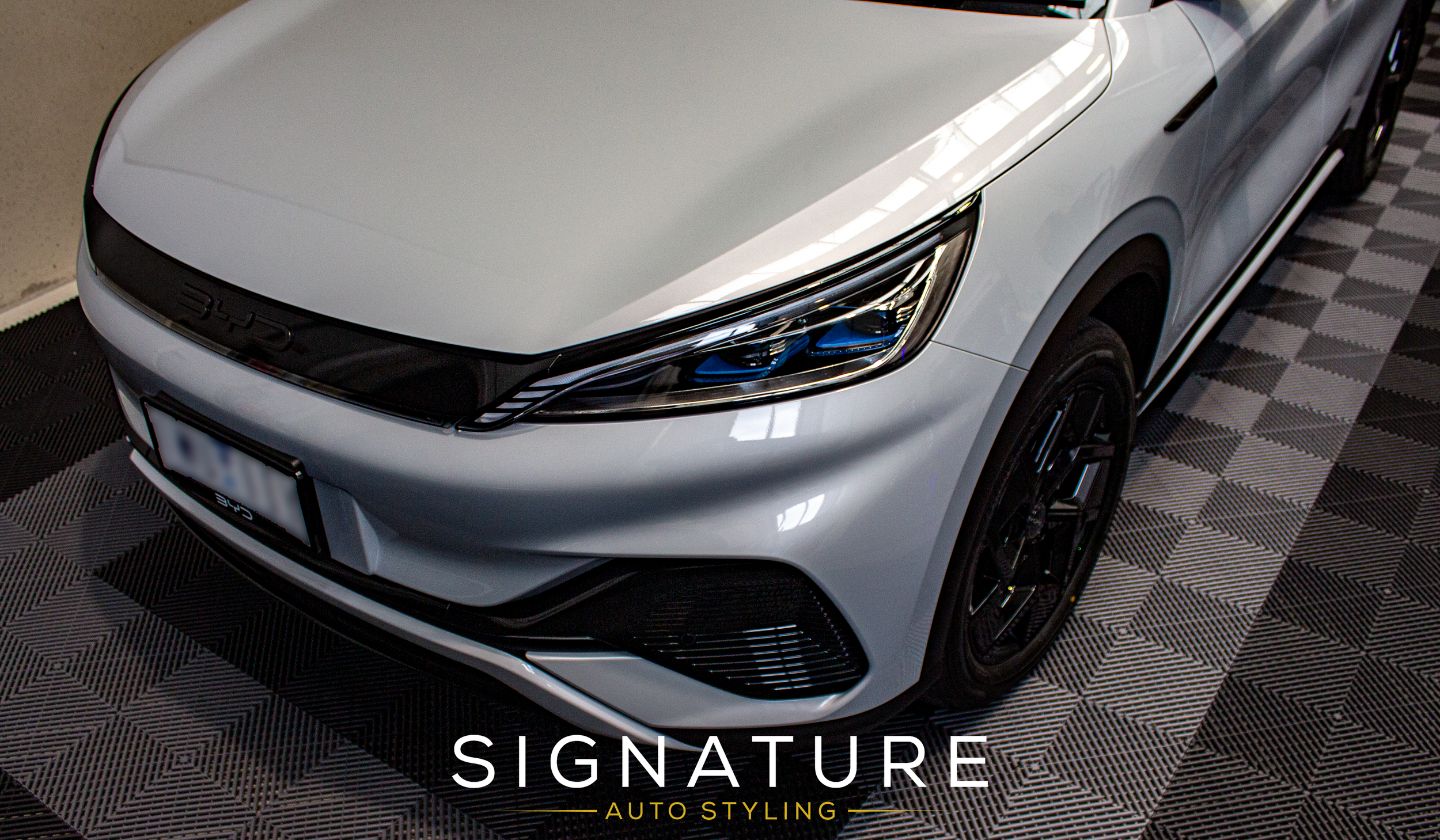
Window Tinting is a professional process of applying a thin, specialized film to your vehicle’s windows to enhance privacy, reduce heat, block UV rays, and elevate aesthetics. This treatment provides both functional and visual benefits, making it a popular choice for car owners. Below is a concise introduction to window tinting, tailored to your interest in vehicle protection and customization (as seen in your queries about PPF and ceramic coating):
Purpose: Window tinting improves comfort by reducing glare and interior heat, protects against harmful UV rays, enhances privacy, and adds a sleek, customized look to your vehicle.
Key Benefits:
Heat Reduction: Blocks up to 60% of solar heat, keeping your car cooler.
UV Protection: Rejects up to 99% of UV rays, safeguarding your skin and preventing interior fading.
Privacy & Security: Darker tints obscure visibility, protecting valuables and passengers.
Glare Reduction: Enhances driving comfort by minimizing harsh sunlight or headlight glare.
Aesthetic Appeal: Offers a polished, cohesive look with various shade options.
WINDOW TINTING
-
Window Tint is a thin film applied to vehicle windows to reduce heat, block UV rays, enhance privacy, and improve aesthetics. Key Benefits:
Heat Rejection: Blocks up to 60% of solar heat.
UV Protection: Stops 99% of UV rays, protecting skin and interiors.
Privacy & Glare Reduction: Enhances security and driving comfort.
Style: Various shades (5%–50% VLT) for a sleek look.
Film Types:
Dyed: Affordable, basic protection (1–3 years).
Metalized: Durable, reflective (5–7 years).
Carbon: No signal interference, matte finish (5–7 years).
Ceramic: Premium, top heat/UV block, clear view (5–10+ years).
Why Choose Tint? Cost-effective ($100–$600), boosts comfort and value. Professional installation (e.g., 3M, XPEL, Rayno) ensures durability.
-
Window Tint vs. Factory Privacy Glass
Why Choose Window Tint?
Better Protection: Blocks up to 99% UV rays and 60% heat vs. factory glass’s minimal heat rejection (10–20%).
Customizable: Various shades (5%–50% VLT), finishes (matte, reflective), and films (dyed, ceramic) for a tailored look.
Enhanced Comfort: Reduces glare and heat for safer, cooler driving.
Flexible Application: Apply to any window, unlike fixed factory glass.
Cost-Effective: $100–$600, adds value with 5–10+ year durability.
Factory Privacy Glass:
Offers basic privacy and slight UV protection but lacks tint’s heat rejection, customization, and performance.
Tint boosts style, comfort, and interior protection. Check local tint laws before applying tint over privacy glass.
-
When choosing window tint for your vehicle, you have several options to customize based on your needs, budget, and style preferences. Below is a concise overview of the key options for aftermarket window tinting, tailored to your interest in vehicle enhancements:
Window Tint Options:
Tint Types:
Dyed ($100–$300): Budget-friendly, basic heat rejection (20–30%), 1–3 years.
Metalized ($150–$400): Reflective, good heat rejection (30–50%), 5–7 years.
Carbon ($200–$500): Matte, no signal interference, 40–50% heat rejection, 5–7 years.
Ceramic ($300–$600+): Premium, 60% heat/99% UV block, clear view, 5–10+ years.
Coverage:
Full Vehicle ($200–$600): All windows for uniform protection.
Side Windows ($100–$400): Front/rear sides for privacy.
Rear Only ($50–$200): Rear windshield/sides, complements factory glass.
Windshield Strip ($20–$50): Top strip for glare reduction.
Custom ($50–$200/window): Specific windows as needed.
Darkness (VLT):
Light (30–50%): Subtle, legal, glare reduction.
Medium (15–30%): Balanced privacy/visibility.
Dark (5–15%): Maximum privacy, check local laws.




